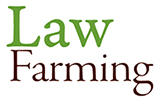Sheep enterprise
The farm supports around 1,400 ewes which are lambed through January and February. The early lambing ewes’ cycles are synchronised with sponges and the ewes are then injected with PMSG to lamb in a four-week window.
If weather and indoor space permit, the ewes and lambs are turned out at four weeks old. The lambs are then creep fed until they reach the desired weight.
From late May to November, when the ewes are dry, they graze some areas of the adjoining Therfield Heath which is a Site of Special Scientific Interest. At other times of the year, they graze permanent grass around the farms. Texel, Suffolk and Charolais rams are used to produce a mixed balance of finished lamb carcasses.
Flock health
As the average annual rainfall is only 600mm, we have few problems with the health of the flocks’ feet. Lambs need to be finished quickly in the summer before pasture dries out and drought sets in. Routine worming has been replaced by dung sampling in an effort to reduce the risk of resistance to the active ingredients in the products used.
Store lamb production
Each autumn, depending on the availability of feed and number of our own lambs remaining on the farm, up to 3,000 store lambs are brought onto the farm and finished on catch crops of stubble turnips sown after winter cereals and before spring cereals and sugar beet. The majority of lambs are sold between February and April. The remaining lambs are fed concentrates ad lib.
Marketing
We supply a local butcher’s shop with lamb throughout the year. The remainder goes to abattoirs in East Anglia and the South West or to live markets.

